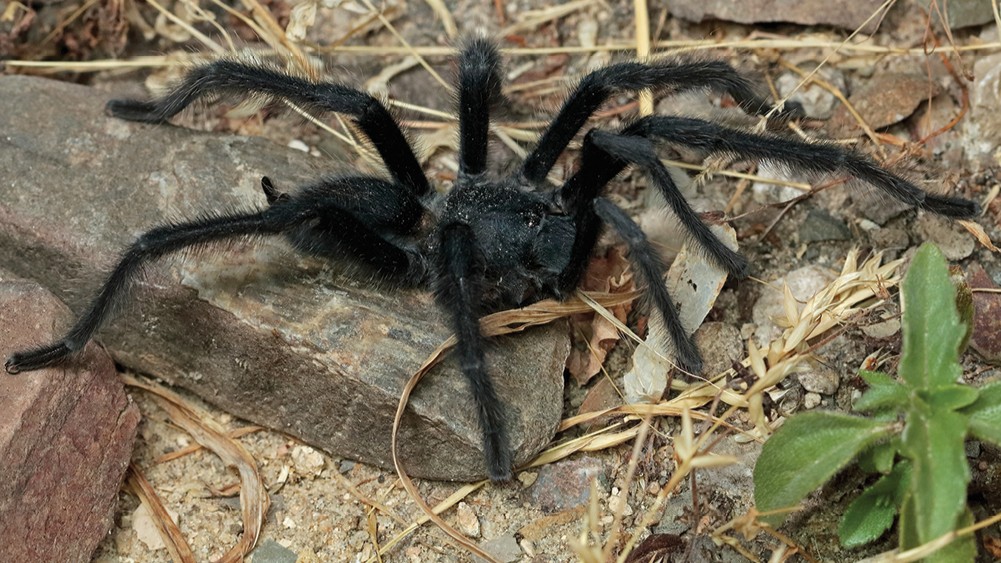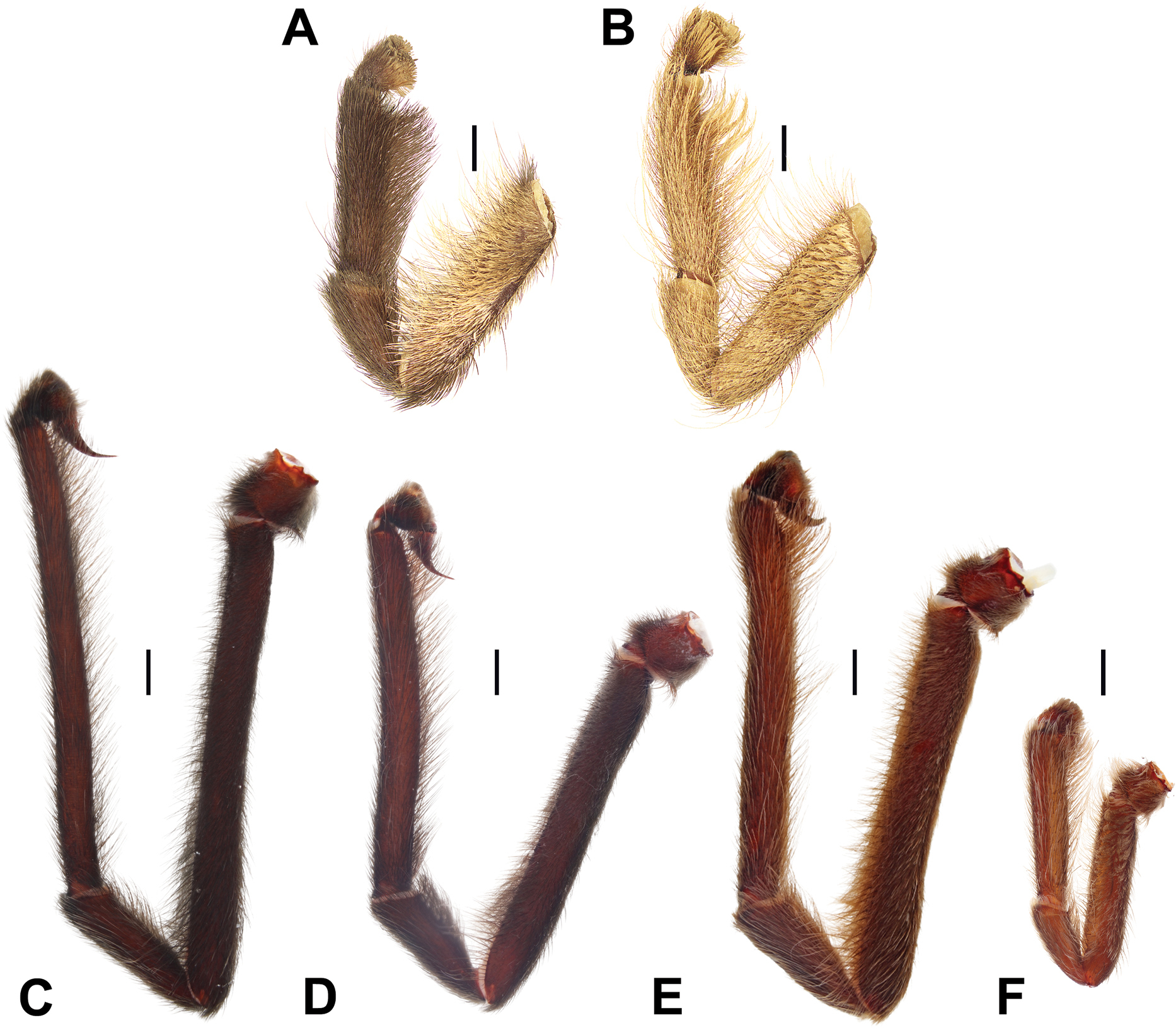'It seems that size really does matter': Males of 4 never-before-seen tarantula species have record-long genitalia
The males of four newfound tarantula species have extremely long genitalia so that they can keep their distance from aggressive females during mating, researchers say.

Scientists have had to create an entirely new spider genus after four new tarantula species were found to have such long genitalia that they couldn't fit into any pre-existing category.
The team believe the males have evolved this impressive appendage to keep themselves as far away as possible from aggressive females, which are known to eat their partners during mating.
Male tarantulas' genitals are typically 1.5 to two times the length of their head and thorax put together. But the newfound spiders' palps — specialized appendages to transfer sperm during mating — are four times as long as their upper bodies and almost half as long as their longest legs, according to a new study.
"The males of these spiders have the longest palps amongst all known tarantulas," study lead author Alireza Zamani, an arachnologist at the University of Turku in Finland, said in a statement. "Based on both morphological and molecular data, they are so distinct from their closest relatives that we had to establish an entirely new genus to classify them, and we named it Satyrex."
The name Satyrex is a combination of the words "satyr" and "rex." In Greek mythology, a satyr is a male nature spirit with the upper body of a human and the lower body of a goat or horse, and "rex" is the Latin word for king. According to the statement, satyrs are often depicted as having exceptionally large genitalia.
The newfound tarantulas live in burrows and cool spaces between rocks on the Arabian Peninsula and the Horn of Africa. Zamani and his colleagues first encountered Satyrex arabicus in Saudi Arabia, photographed Satyrex ferox in Yemen and Oman, and described Satyrex somalicus and Satyrex speciosus in Somaliland. They published their findings July 22 in the journal ZooKeys.
Related: We now know why tarantulas are hairy — to stop army ants eating them alive
Get the world’s most fascinating discoveries delivered straight to your inbox.
Of the four newfound species, S. ferox stands out as the largest and fiercest, hence its name. Both males and females have leg spans of about 5.5 inches (14 centimeters), and males' palps stretch an incredible 2 inches (5 cm) long, possibly to provide a safety buffer against cannibalistic females during mating.
"We have tentatively suggested that the long palps might allow the male to keep a safer distance during mating and help him avoid being attacked and devoured by the highly aggressive female," Zamani said.

The species is also highly defensive. "At the slightest disturbance, it raises its front legs in a threat posture and produces a loud hissing sound by rubbing specialized hairs on the basal segments of the front legs against each other," Zamani explained.
Molecular and phylogenetic analyses, where scientists reconstruct the evolutionary history of a species through genetics, revealed that a tarantula previously assigned to the genus Monocentropus is in fact more closely related to Satyrex spiders, too. Researchers first described Monocentropus longimanus from Yemen in 1903, but the spider has now been reclassified as Satyrex longimanus.
"The much longer palps of S. longimanus and the four newly described species were among the primary characters that led us to establish a new genus for these spiders, rather than place them in Monocentropus," Zamani said. "At least in tarantula taxonomy, it seems that size really does matter."
Spider quiz: Test your web of knowledge

Sascha is a U.K.-based staff writer at Live Science. She holds a bachelor’s degree in biology from the University of Southampton in England and a master’s degree in science communication from Imperial College London. Her work has appeared in The Guardian and the health website Zoe. Besides writing, she enjoys playing tennis, bread-making and browsing second-hand shops for hidden gems.
You must confirm your public display name before commenting
Please logout and then login again, you will then be prompted to enter your display name.


